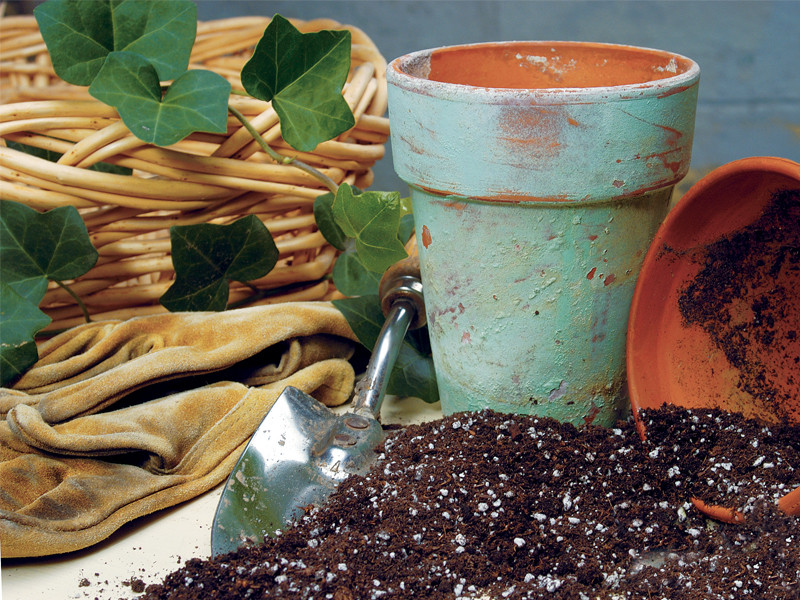When miners finally found gold, they struck ”pay dirt.” If a bat buzzes you, you may “hit the dirt” and drop to the ground. When you have juicy gossip, you have the “dirt” on someone. Dirt is dirt. Except when it isn't. Potting soil and outdoor topsoil have very little in common. Indeed, many so-called potting soils may have no actual soil in them. Potting soil needs to drain well while staying aerated, so it often contains sphagnum moss, bark, coconut husks (coir), and vermiculite. Garden soil or topsoil has no specific ingredients; it can contain sand, rocks and twigs along with compost, and even dead animals and manure.
Container plants grow best in potting soil because it lets water drain through easily rather than collect around the roots, which can rot a plant, but it also keeps enough moisture in to make up for growing plants in a small volume of dirt. Often, potting soil is sterilized, which prevents fungus or other soil-borne organisms from affecting plants. It is also free of insects, weed seeds and debris. Potting soil doesn't compact like topsoil does in pots. With well-draining potting soil, you do not need to put a layer of stones or gravel at the bottom of your pots for drainage. Your containers do still need drainage holes so extra water runs out.
Pick containers that fit in with the size of the area they will be in. Small spaces usually mean smaller pots, but these will need to be watered more often. You may want to mix in a good organic slow-release fertilizer when planting the containers. Remember that the more often you water your potted plants, the more nutrients leach out, so potted plants often need more fertilizer than their garden counterparts. But be care to avoid overfertilizing; too much fertilizer can burn the roots, and heavy nitrogen will result in lots of leaves but few flowers.
With potted plants you can follow the sun and move plants into or away from sunlight as they prefer. Potted plants may even use less water than watering a large outdoor space. A good trick is to keep a jar or watering can by the sink and fill it with cool water while waiting for the hot water to flow for another use.
Growing container plants is a great project for kids because they can take ownership of an individual pot and call it their own. Herbs are always a good choice because you often need just a pinch or a few leaves. Any of the greens, from lettuce to Swiss chard, can do well even in low-light areas. If you have the sunlight, try potted tomatoes such as Tumbling Tom, Better Bush or Patio. Hot peppers can do double duty as edible ornamentals.
You don't need to stick to traditional pots; try using giant seashells, colanders and even old shoes. Colanders have built-in drainage holes. Line the colander with paper before adding potting soil.
So bring the outdoors indoors, and pot up some plants for the season. That's the dirt on potting soil.






















































